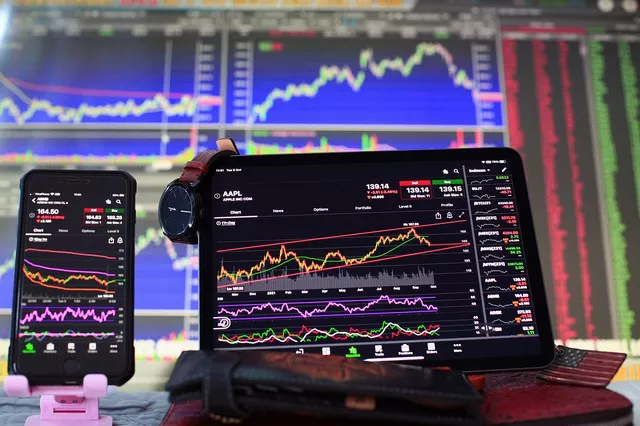Futures markets play a crucial role in global finance, offering opportunities for investors, traders, and businesses to manage risk and speculate on price movements. This article explores the concept of futures, the types of futures markets available, and how individuals can participate in these markets. From commodities to financial instruments, futures provide a platform for hedging and investment strategies that impact economies worldwide.
Understanding Futures Markets
Futures markets are financial exchanges where participants buy and sell contracts for future delivery of commodities or financial instruments at a predetermined price. These contracts specify the quantity, quality, and delivery date, providing clarity and standardization for trading. Key elements of futures markets include:
Contract Specifications: Each futures contract outlines the underlying asset, contract size, expiration date, and delivery terms.
Leverage: Futures contracts typically require a fraction of the contract value as initial margin, allowing traders to control larger positions with less capital.
Price Discovery: Futures prices reflect market sentiment and expectations about future supply, demand, and economic conditions.
Types of Futures Markets
1. Commodities Futures
Commodities futures involve physical goods such as agricultural products (e.g., wheat, corn), energy (e.g., crude oil, natural gas), and metals (e.g., gold, silver). These markets allow producers, consumers, and speculators to manage price risks associated with raw materials.
2. Financial Futures
Financial futures are contracts based on financial instruments such as stock indices (e.g., S&P 500), interest rates (e.g., Treasury bonds), currencies (e.g., Euro, Yen), and individual stocks. Financial futures provide exposure to asset classes beyond physical commodities.
3. Currency Futures
Currency futures enable participants to speculate on exchange rate movements between pairs of currencies (e.g., USD/EUR, GBP/JPY). These contracts are used for hedging currency risk in international trade and investment portfolios.
4. Stock Index Futures
Stock index futures represent the value of a specific stock market index (e.g., Dow Jones Industrial Average, NASDAQ-100). Traders use index futures to gain exposure to broad market trends and hedge equity portfolio risks.
5. Interest Rate Futures
Interest rate futures are contracts based on the future value of interest rates (e.g., U.S. Treasury bonds, LIBOR). These futures help manage interest rate risk for financial institutions, investors, and corporations.
Accessing Futures Markets
1. Futures Exchanges
Futures contracts are traded on organized exchanges such as:
Chicago Mercantile Exchange (CME): Offers a wide range of futures contracts including commodities, financials, and indices.
Intercontinental Exchange (ICE): Specializes in energy, commodity, and financial futures and options.
Eurex: A European-based exchange offering futures and options on European indices, interest rates, and equity derivatives.
2. Online Brokerage Platforms
Individual investors and traders can access futures markets through online brokerage platforms that provide:
Trading Platforms: User-friendly interfaces for placing orders, monitoring positions, and accessing market data.
Educational Resources: Tutorials, webinars, and market analysis to help users understand futures trading strategies and market dynamics.
See Also: How Do Overnight Futures Work?
3. Clearing Firms and Brokers
Futures transactions are cleared through clearing firms and brokerage houses that handle:
Margin Requirements: Initial and maintenance margin deposits to cover potential losses.
Settlement: Daily settlement of gains and losses based on price movements.
Regulatory Compliance: Adherence to exchange rules and regulatory requirements.
4. Institutional and Retail Participation
Futures markets accommodate a diverse range of participants including:
Institutional Investors: Hedge funds, asset managers, and pension funds use futures for portfolio diversification and risk management.
Retail Traders: Individual investors and speculators trade futures to capitalize on price movements and market opportunities.
Strategies for Futures Trading
1. Speculation
Speculative traders aim to profit from price fluctuations in futures markets by:
Long Positions: Buying futures contracts with the expectation that prices will rise.
Short Positions: Selling futures contracts with the anticipation that prices will decline.
2. Hedging
Hedging involves using futures contracts to offset potential losses in the underlying asset or portfolio:
Example: A wheat farmer hedges against price declines by selling wheat futures contracts.
3. Arbitrage
Arbitrageurs exploit price differentials between related assets or markets to profit from inefficiencies:
Example: Buying a futures contract on an index and selling its underlying stocks to capture price differentials.
4. Spread Trading
Spread traders simultaneously buy and sell related futures contracts to profit from price differentials:
Example: Trading the price difference between crude oil futures contracts of different delivery months.
Risks and Considerations
1. Market Volatility
Futures markets can experience rapid price movements influenced by economic data, geopolitical events, and market sentiment.
2. Leverage Risk
Trading futures on margin amplifies potential gains but also exposes traders to increased losses beyond their initial investment.
3. Liquidity Risk
Thinly traded futures contracts may have wider bid-ask spreads and limited liquidity, impacting execution prices.
4. Regulatory Environment
Futures trading is subject to regulatory oversight aimed at ensuring market integrity, investor protection, and fair competition.
Future Trends in Futures Markets
1. Technological Advancements
Advances in trading algorithms, artificial intelligence, and blockchain technology are transforming futures trading practices and market efficiencies.
2. Globalization
Growing international trade and investment flows are expanding opportunities and liquidity in futures markets across regions.
3. Sustainability and ESG Investing
Increased focus on environmental, social, and governance (ESG) criteria is influencing futures markets, with demand for sustainable investing solutions.
Conclusion
Futures markets offer diverse opportunities for participants seeking to manage risk, speculate on price movements, and access global financial markets. Whether trading commodities, financial instruments, or currencies, futures provide essential tools for hedging and investment strategies. Accessing futures markets involves utilizing exchanges, online brokerage platforms, and clearing firms, supported by educational resources and market analysis. Understanding the dynamics, strategies, and risks of futures trading empowers investors and traders to navigate these markets effectively and capitalize on market opportunities. As futures markets continue to evolve with technological advancements and global economic trends, staying informed and adaptive remains essential for success in futures trading.


